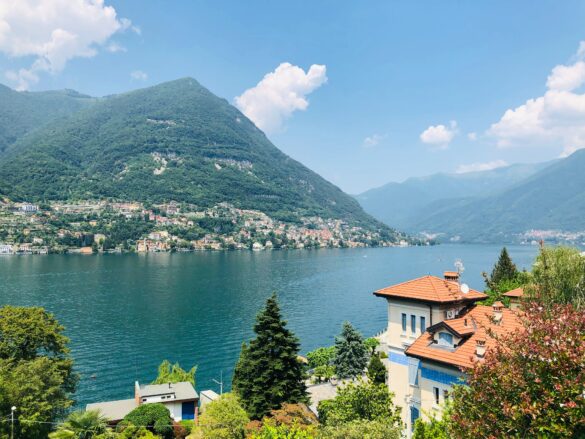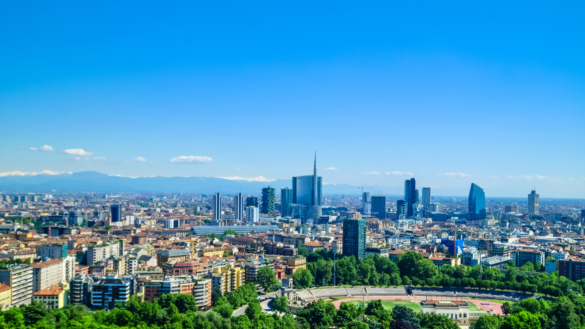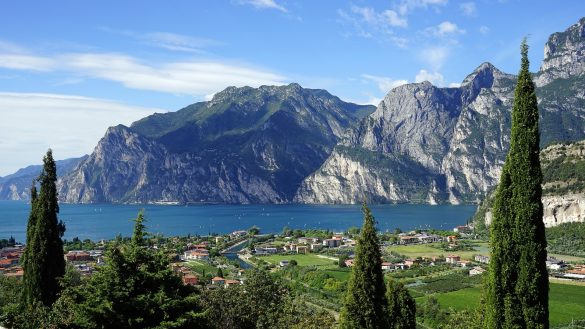A multi-level and multi-stakeholder approach
Lombardy is one of the twenty administrative regions in Italy, located in the northwest of the country, and one of the most populous and richest regions in the country as well as one of the richest in Europe. The localization of the 2030 Agenda in Lombardy is in progress and the region is considered a forerunner for the SDGs. Lombardy is defining its SDGs strategy and is currently focused in involving and coordinating a wide range of national, regional, and local stakeholders. While the action plan and monitoring arrangements are being defined, the internal organization arrangements, the stakeholders involved at various levels of governance, and the thematic priorities have been determined.
As stipulated by a 2017 Italian law, the regional strategies on sustainable development must be consistent with the themes and priorities identified in the Italian National Sustainable Development Strategy (NSDS). The NSDS has five core areas (People, Planet, Prosperity, Peace, and Partnership), each of them has national strategic choices articulated in national goals and its corresponding set of the 2030 Agenda targets. The goals emerged from a consultation process in which regions, local authorities, NGOs, professional organizations, and citizens all participated.
In addition to providing inputs to the national goals, Lombardy cooperated with the national level on several issues and received technical and financial assistance. The national support was predominantly in two ways: activities and workshops to build capacities of local governments and a semi-annual round-table discussion with all the regions to address their special needs and exchange viewpoints and information. For instance, the First National conference for sustainable development happened in December 2018. Further, the Ministry of the Environment activated national funding to help the process of defining and implementing regional strategies.
The SDGs governance in Lombardy involves the executive and legislative bodies (Council) in charge of decision making and awareness raising, counting with the technical support of the development agency (PoliS-Lombardia). Within Lombardy’s regional government, the Environmental Department (Direzione ambiente) is responsible for coordinating the SDG strategy, and played an active role in raising awareness of SDGs to its staff. Its expertise is built from past experiences implementing environmentally-sustainable policies. The Environmental Department leads an interdepartmental working group that is responsible for various tasks: creating a regional system of governance for the 2030 Agenda; involving stakeholders; organizing working tables on specific themes; and identifying good practices from various levels of governance. In general, transversal cooperation is easier with departments that historically delivered social and environmental policies, although further information and training are needed in other departments to facilitate the dialogue between sectors.
In addition to the multi-level governance, Lombardy seeks to embrace a multi-stakeholder collaboration. The Regional Observatory is a space for debate with several stakeholders, including environmental NGOs, professional organizations, bank foundations, consumer organizations, and trade unions. An annual “European Sustainable Development Week” (La Settimana della Sostenibilità), for instance, is co-organized by Lombardy involving all these actors. Also, in 2019, an information campaign to local authorities was launched and the “Lombardy Report” to the SDGs was presented by PoliS-Lombardia to the regional Council.
The “Lombardy Report” (Rapporto Lombardia) is an analysis tool organized by PoliS-Lombardia to support policy makers for the regional implementation of the 2030 Agenda. It showcases relevant regional policies and compares the achievement of the SDGs in Lombardy with 21 countries from the European Union based on data from the UN, Eurostat, and Italian Institute of Statistics (ISTAT). The first edition, presented in 2017, proposed 21 indicators that measure and evaluate Lombardy’s actions towards each of the SDGs. The second edition updated the previous report and assessed Lombardy’s performance in one-year time period: the region achieved significant progress in SDGs 4 (quality education), 5 (gender equality), 9 (industry, innovation and infrastructure), and 17 (partnerships), while there was a decline in performance in SDGs 1 (no poverty), 8 (decent work and economic growth), and 10 (reduced inequalities), and the other goals remained stable.
Lombardy linked the SDGs goals and targets with its legislative framework and policy development plan in force –harmonizing, for instance, the European Structural and Investment Funds (ESIF) with the SDGs and reorienting the European Regional Development Fund (ERDF) to optimize the contribution towards SDGs. Also, Lombardy identified its priorities in the fields of climate change, energy and circular economy, and set pilot indicators to monitor social and environmental development.
The localization of the SDGs in Lombardy is still facing challenges. In part, they derive from the European context in which the lack of policy and operational frameworks results in unclear EU financial and technical support available. Another major obstacle comes from a lack of indicators and targets defined at the national level. There is still uncertainty in matching current regional development indicators with national indicators, making it difficult to analyze performance in terms of SDGs. Furthermore, Italy has not yet implemented any specific review mechanism, nor has it adopted policy impact assessment legislation. Moreover, internally, Lombardy needs to foster coherence and integration between all departments and policy dimensions, ameliorating the distribution of resources among the number of issues, sectors, and stakeholders involved in the process.
Given the early stage of the SDGs implementation, it is not possible to assess achievements yet, which will depend on the commitments to be made. All in all, the planning phase has the merits of successfully considering a multi-level governance and multi-stakeholder approach.






